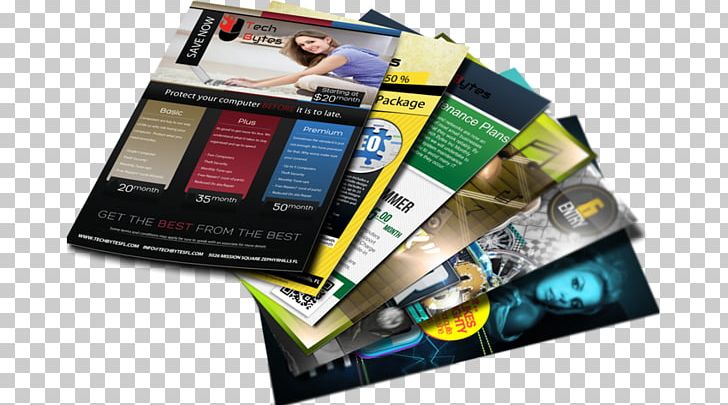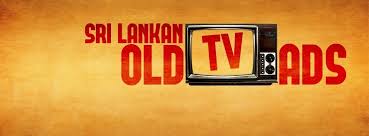
Maggi has been the talk of the town since it was banned from India in India because it contained lead. Nestle, the company that makes Maggi, quickly responded by creating a print advertisement to persuade the public to switch to their noodles. It features a mother-and-child duo who are the core of its campaign. It also deploys visual effects to make the ad stand out.
The ad highlights the value of the family and shows how Maggi noodles make it easy cook nutritious meals for loved one. Featuring a mother and child, it's a feel-good ad that appeals to the hearts of young and old alike.
A short instrumental song is used to accompany the Maggi ad. The brand's Maggi Veggie Masala soup is also featured in the ad. It is a healthy soup infused with vegetables, which can be used for both lunch and dinner.
Nestle has launched a social-media campaign alongside the ad. Nestle, for instance, published a series on its Facebook page that highlighted the Maggi ad. It also encouraged consumers to share their Maggi stories.

The ad features the slogan "Mummy Bhookh Lagi Hai", which is intended to make mother-daughter relationships as close as possible. The ad doesn’t show a mom cutting vegetables, but the mother cooks the Maggi for her daughter. This is done behind the scenes of several children.
The Maggi ad was released in four different languages to strengthen its presence in smaller markets. The company also launched cooking classes to help people make Maggi noodles. It also offers online recipes in several other countries.
EiPi Media conceived the Maggi commercial. This agency has a number of high-profile clients, including Nestle, Sony, and Volkswagen. Prahlad Kalkar directed the advertisement film.
The Maggi ad, like its slogan, combines technology and visual effects to make the advertisement feel special. The ad is set in a hilly village in India. It was shot using a Sony LIV.
The Maggi ad gets a lot of negative attention, but it is also highly praised because of its unique advertising strategy. Among other tactics, the ad has featured enamel placards outside shops that sell Maggi products. It has also been advertised on posters that are posted on public transport.

Another advertising gimmick has been the introduction of a welcome kit to new consumers. It included a fridge magnet and calendar as well as 12 Maggi packs. The company's forthcoming relaunch was promoted by the ad.
Nestle is launching a new instant noodles variant in order to improve its position in the market. Snapdeal, an ecommerce platform, is the company's partner. The deal was announced earlier in the week and Snapdeal is already seeing significant sales for its Maggi packets.
Despite all the controversy surrounding Maggi's ban, it is still one of the most loved packeted foods in the nation. The company has a strong online presence. Its Facebook page has 261,433 subscribers.
FAQ
What are the basics of print advertising?
Print advertising is an effective way to reach consumers. It is used by many companies for promoting products and services. The main goal is to catch the attention and buy from the consumer.
Print ads are typically one page long and include text, images, logos and other graphics. Print ads can also contain sound, animation, videos, and hyperlinks.
The following are the main types print advertisements:
1. Brochures are large-format printed materials that are designed to draw people into shops. Brochures can often be adorned with brightly colored images and eye-catching designs.
2. Catalogues – These are smaller versions to brochures. These are usually sent to customers who request information about specific items.
3. Flyers - These are small pieces of paper distributed at events such as concerts and fairs. Flyers can be handed out at retail outlets for a small fee, but are generally free.
4. Posters - These flyers can be larger than the ones you see on the flyer. They can be displayed on fences, walls, or buildings. They are created by computer software programs in order to grab passersby's eyes.
5. Direct mail - These are letters or postcards that are sent directly to potential customers. These are sent periodically by companies to remind current customers about their business.
6. Newspaper ads - These ads are published in magazines and newspapers. They can be quite lengthy and often include text as well as images.
How can you choose your target audience?
Start with yourself and those closest to your heart. Do you not know where to start? Ask yourself "Whom do I want to reach?"
Ask yourself the following questions: Who are my industry's most influential people? What are their biggest challenges? Who are my top-ranking people? They hang out online.
Rewind to the beginning, when your business was founded. What was your motivation for starting? What problem did you solve for yourself, and how did you do it?
These questions will enable you to identify your ideal client. This will allow you to learn more about your ideal customers and their motivations for buying from you.
For clues on who your competitors cater to, check out their websites and social media pages.
Once you have identified your target customers you will need to choose the channel to reach them. A website might be created to reach home buyers, for instance, if your business provides services to agents in real estate.
If you provide software to small businesses, you could develop a blog targeting those companies' owners.
You could also create a Facebook account for teens if you sell clothing. A Twitter account could be set up by restaurant owners to allow parents to search for places that are kid-friendly.
It is important to remember that there are many methods of getting your message across.
What is advertising's main purpose?
Advertising is more than selling products. It's about building an emotional connection with your customers.
Advertising is about communicating ideas and values to people who are already interested in what you have to offer. It's about changing people's attitudes. It's about building trust.
It's all about helping people feel good.
If you don't understand your customers' needs, you can't market to them.
So before you start any advertising project, you should first understand your customer's needs and wants, and buying habits.
This will allow you to create ads that resonate with your target audience.
What is an advertising buyer?
Advertising space is purchased by an advertiser on TV, radio and printed media.
An advertiser pays for the time they want their message to appear.
They do not always look for the best ads, but are looking for the most effective to reach their target audience.
An advertiser might have information specific to their potential customers such as age and gender, marital status or occupation, hobbies, interests, income, etc.
The advertiser can use this data to determine which medium will work best for them. An example is direct mail that appeals to older people.
Advertisers also consider the competition. If there are similar businesses nearby, they might choose to place their ads near those competitors.
Advertisers must also take into account the size of their budget as well as the time it will take to spend the money before it expires.
How much does it cost to advertise on social media?
This route is not for everyone. You will be charged monthly for your time spent on each platform.
Facebook - $0.10 per 1,000 impressions
Twitter - $0.20 per 1,000 impressions (if you tweet)
Linkedin - $0.30 for 1,000 impressions if your send out invitations
Instagram - $0.50 for 1,000 impressions
Snapchat - $0.60 Per 1,000 Impressions ($0.40 per User)
YouTube - $0.25 Per 1,000 Views
Tumblr: $0.15 per 1,000 impressions of text posts
Pinterest - $0.05 per 1,000 impressions per month
Google+ - $0.15 to $0.0.20 per 1,000,000 impressions
Tumblr – $0.15 - $0.20 per 100,000 impressions
Vimeo - $0.20 to $0.25 per 10,000 impressions
Soundcloud: $0.20-$0.25 Per 1 Million Plays
StumbleUpon - $0.20 -$0.25 per 1 billion pageviews
Digg - $0.20 to $0.25 per 1000 diggs
Reddit - $0.20 - $0.0.25 per 1000 Comments
Wordpress - $0.20 - $0.25 for 500 comments
Flickr - $0.20 -- $0.25 per 5,000 photo uploads
What is the best way to learn about television advertising?
Television advertising is an extremely effective medium for reaching many people at once. It was also very costly. However, if you use it well, it can be incredibly powerful.
Although there are many types, TV ads share certain common characteristics. It is important to make sure that your TV ad fits into the appropriate category. If you're running a product commercial, don't try to run a lifestyle commercial as a product commercial. Your message should be consistent across the entire campaign.
A second important thing to keep in mind is that prime-time hours is the best time to air ads. This is because most viewers watch TV while relaxing in front of the set. They should be able to concentrate on what you are saying.
Finally, just because you've a lot of money doesn't mean you'll get great results. It may be the reverse. The University of California conducted a study that found commercials shown on popular programs were less likely than those on non-popular programs to sell products. Make sure you are doing it right if you're spending a lot on TV advertising.
Why not advertise your business on social media?
Social Media Marketing allows you to reach customers right where they are, via social networks like Facebook, Twitter, LinkedIn and YouTube. You can also target specific audiences within these networks by using keywords.
This advertising method is cost-effective because it costs less to market online than traditional methods. You can also build strong relationships and trust with your clients, both current and prospective.
It's easy to start using social media to promote your business. All you need is a computer or smartphone and access to the Internet.
Statistics
- In 1919 it was 2.5 percent of gross domestic product (GDP) in the US, and it averaged 2.2 percent of GDP between then and at least 2007, though it may have declined dramatically since the Great Recession. (en.wikipedia.org)
- Advertising spending as a share of GDP was about 2.9 percent. (en.wikipedia.org)
- It collects money from the advertisers, keeps 32% for its role in facilitating the process, and the remaining 68% goes to the publisher (you). (quicksprout.com)
- This means that at least 50% of an ad needs to be shown on the screen for at least one second. (quicksprout.com)
External Links
How To
How to run ads that are paid
Paid advertising is any type of marketing where you pay money. This could be purchasing advertising space on the internet, placing ads in newspapers and magazines, as well as paying someone to promote you business online. There are many forms of paid advertising. These include social media marketing, email marketing and display advertising.
For your campaign to be successful, you need to know what it costs and what results you can expect. You also want to consider whether or not you'll get enough return on investment (ROI) to justify the cost.
Before you launch a paid campaign for advertising, you must first establish if potential customers are interested in your product or services. If you have no idea, then start with free advertising like posting flyers around your neighborhood, making announcements at school, or sharing your message through social media sites.
Knowing your target audience will help you decide the best way to reach them. You might advertise in the local newspaper classifieds if your product is organic. If you sell cosmetics, advertising on television or radio might be a better option.
After deciding on whom you want to reach, you must figure out how much you're willing to spend. There are several ways to calculate your budget. You can divide your budget into daily, weekly and monthly amounts. You can also use a spreadsheet program.